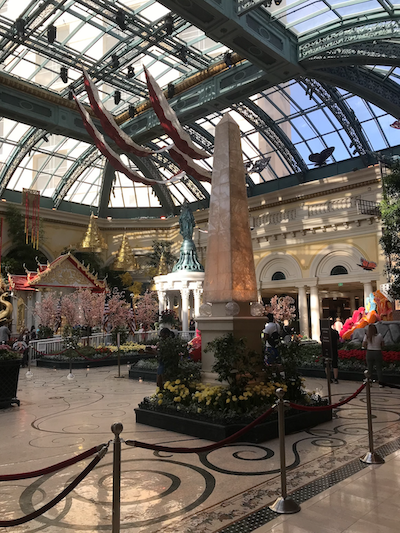Nearly 50 years ago an important book about Las Vegas architecture from a theoretical standpoint was published. It is "Learning from Las Vegas," the title inspiring the title of this post.
The Las Vegas of 1968 when the authors visited and did their on-site research was different from today's Las Vegas in some important ways. Nowadays many of the largest casinos offer more than gambling, restaurants and shows. They have shopping areas and themed architecture and interiors. Moreover, the architecture and interiors were created at great expense.
That is in contrast to nearly all the Modernist buildings we see today and that were built since World War 2. Those structures, conforming to the architectural profession's near-universal design religion, are visually comparatively simple and usually nearly or absolutely ornamentation-free. They are also inexpensive to build compared to Las Vegas' grand casino-hotels that include traditional paintings and ornamental sculpting. The latter is far more costly today than it was a century ago when there were many skilled craftsmen who did such work at affordable prices.
What this means is that Las Vegas is one of the few places in America where folks can experience important new buildings featuring what was much more common before the 1930s. The town is an oasis in more ways than one.
Some parts of The Strip are Modernist, such as the recent City Center development shown here.
Much more visually interesting is the nearby Paris casino (foreground) and hotel (background).
This entrance combines Second Empire statuary and Métro station Art Nouveau entrance details.
The MGM Grand had a lot of 1930s Moderne movie theater décor, most of which has been removed to create a sterile Modernist interior. Above is a remaining touch of what the place was once like.
More bas-relief, this found in Caesar's Palace that features Classical Roman motifs.
Elsewhere in Caesar's.
More at Caesar's.
The New York's interior includes many touches of that city from the 1930s. Besides street recreations there are murals such as shown here.
This is a riff on the Daily News Building.
Sorry for the tilt of this view of a huge, Lalique-like sculpture in the Palazzo section of The Venetian.
Here is the hallway approach to The Venetian's hotel lobby. Some shops are behind the columns.
This is the expensive-shops area of the Bellagio.
Elsewhere in the Bellagio is this conservatory that features seasonally themed décor: Christmas, Autumn, Chinese New Year, etc.










































